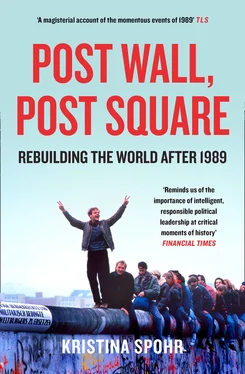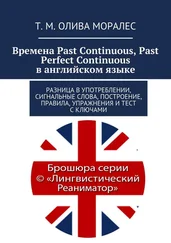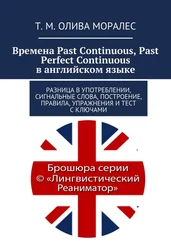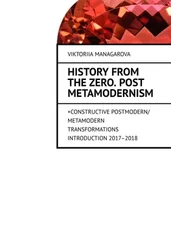These dramatic shifts left Hungarian politics totally up for grabs. On 18 October the parliament went ahead and passed the constitutional amendments agreed by the national round table, not least renaming the country the ‘Hungarian Republic’ – dropping the word ‘People’s’. Free elections were scheduled for 25 March 1990 and the presidential election for the summer. So Hungary had moved to multiparty politics before becoming a democracy. And for longer than in Poland an old – albeit now reform-oriented – government led by the renamed communists would continue to run political affairs. Whereas in Poland, the 4 June elections were the decisive turning point in the exit from communism, the emotional and symbolic roots of Hungary’s renewal as a nation were dramatised on 16 June, with the reburial of Nagy and the renunciation of 1956.
So the Poles were in the vanguard of democratisation. But this was a process that took place within the boundaries of a single state, just as in the Soviet republics of Estonia, Latvia and Lithuania. It was in Hungary that Europe’s Iron Curtain would be lifted.
*
August was the continent’s main holiday month. Paris almost closed down. Italians cooled off in the coastal resorts of the Mediterranean and the Adriatic. West Germans disappeared to the mountains of Bavaria or to the North Sea coast. In the communist East, sunseekers headed to Bulgaria’s Black Sea beaches or relaxed by the Baltic Sea, while large numbers of East Germans piled into their little, candy-coloured Trabants and drove off to Hungary. The shores of Lake Balaton were a particularly popular destination for those who loved camping. But this year, many campers were planning a one-way trip, having read or seen news reports about the end of Hungary’s barbed-wire border. They glimpsed the chance of slipping into the West. As historian Mary Sarotte has pointed out, the East German secret police, the Stasi, wrote up a ‘surprisingly honest internal summary’ of their citizens’ motives for wanting out of the GDR: lack of consumer goods, inadequate services, poor medical care, limited opportunities for travel, bad workplace conditions, the relentlessly bureaucratic attitude of the state, and the lack of a free media.[119]
Material reasons aside, there was another more political cause for flight. Inspired by the amazing political transformations in Poland and Hungary – countries they knew well and had visited in their hundreds of thousands – many East Germans saw Honecker, by contrast, as an immovable obstacle to progress in their own country. He was ‘giving yesterday’s answers to today’s questions’. Resentment first broke into the open in May when local elections, which many East Germans hoped would be held in the spirit of the USSR’s democratisation, had in fact been as tightly controlled as ever by the party. At the polling station everyone was merely expected to approve the list of candidates put forward by the ruling party. There was no opposition and no choice – other than rejecting candidates, which many did. Those who ‘forgot’ to vote were promptly visited with a helpful reminder from the Stasi. When on election night, 7 May 1989, the results were announced, 98.85% had voted for the official lists. Everything was ‘in order’: that’s at least what state election director Egon Krenz proclaimed.[120]
The election was a travesty and the result obviously bore no relation to the real mood of GDR citizens. They felt conned by this charade of democracy. One of the few protest posters read sarcastically ‘Always on board for election fraud’ ( Nie genug vom Wahlbetrug ). It was as if East Germans were being treated as children in a playpen, whereas the Poles and Hungarians were allowed to behave like adults – free to voice independent political views and help shape political change for themselves. ‘Many people can no longer tolerate the kindergarten atmosphere, or being constantly led by the nose on all fronts,’ said Reinhard Schult, a leading East German activist. ‘People are leaving East Germany because they have lost all hope of change.’[121] In 1988 a total of 29,000 people from the GDR had legally exited west. In just the first six months of 1989, 37,000 had been granted permission to do so.[122]
Economic prospects and political despair were the ‘push’ factors. On the ‘pull’ side, Hungary’s increasingly porous border with Austria was obviously significant. Yet that in itself was not sufficient because, if people got caught ‘preparing’ or ‘trying’ to run away illegally, the Hungarian authorities were obliged to send them back to the GDR under a secret protocol to a 1969 bilateral treaty. But on 12 June 1989 there was a new legal twist when the Hungarian government started to adhere to the 1951 UN Geneva Convention on Refugees – honouring a commitment it had made in March. This striking substitution of political principles suggested that Hungary might no longer force East Germans back to the GDR: to borrow Gorbachev’s language, the government now placed allegiance to universal values above any obligations to fellow communist states. Rather than being illegal defectors, East German escapees could now hope to obtain the status of ‘political refugee’ in international law and thereby give legitimacy to their flight.[123]
The situation on the ground, however, was still somewhat opaque. The Hungarian bureaucracy had so far not decided on the status of GDR citizens: they argued that those desiring to leave ( ausreisewillige DDR-Bürger ) were not in the same category as those deemed to be politically persecuted ( politisch Verfolgte ) under the UN convention. But even if Hungarian border officials were still hindering escape attempts by East Germans, sometimes with firearms as happened on 21 August, the number of those being returned to the GDR security forces or even just notified by name to East Berlin as attempted escapees was dwindling. Clearly close cooperation between the Stasi and the Hungarian security forces (and also those in Poland) was a thing of the past; this was another sign that the bloc was beginning to crumble.[124]
By late August an estimated 150,000–200,000 East Germans were vacationing in Hungary, mostly near Lake Balaton. Campsites were full and roads were jammed. Many GDR visitors had overstayed their originally planned and officially approved two- or three-week holidays. Some were simply hanging around in the hope of dramatic new political developments; others were watching for the right moment to slip through the increasing number of open stretches of border fences through quiet fields or secluded woodland. Hundreds more tried a different route to freedom, squatting in the grounds of the West German embassy in Budapest where they hoped to claim their automatic right to citizenship in the Federal Republic. Whatever their route, the East Germans were becoming a serious refugee problem for Hungary.[125]
The 19th of August would prove a pivotal moment. The MEP Otto von Habsburg – eldest son of the last Austro-Hungarian emperor – together with human-rights activists and the opposition Hungarian Democratic Forum, had planned a party to say ‘farewell to the Iron Curtain’. What became known as the ‘Pan-European Picnic’ was intended as a jolly gathering of Austrians and Hungarians to celebrate freedom on a sunny summer afternoon in meadows near a border crossing on the road from Sopron (Hungary) to Sankt Margarethen im Burgenland (Austria). This was where, several weeks earlier, foreign ministers Horn and Mock had cut open the barbed-wire fence between East and West.[126]
But these modest, local festivities turned into something much more political when, at the last minute, Imre Pozsgay got in on the act as the party’s co-sponsor. He arranged with his old friend István Horváth, the reformist interior minister, as well as Prime Minister Németh, that as a symbolic gesture the border gate would be open for three hours that afternoon. Border guards were instructed to carry no weapons and not to take any action. While the picnic posed no particular legal issues for Hungarian and Austrian citizens, who had permission to travel between their countries, the situation was different for East Germans. Leaflets publicising the event were printed in German and distributed beforehand; these included maps guiding people to the picnic spot and to where they could ‘clip off part of the Iron Curtain’. As a result the little border town of Sopron filled up with some 9,000 people camping or staying in B&Bs, and the West German Foreign Ministry had even dispatched extra consular staff there to ‘assist fellow Germans’. All this added to the pressure on the Hungarian border guards who were now, in effect, being observed by Western diplomats.[127]
Читать дальше












